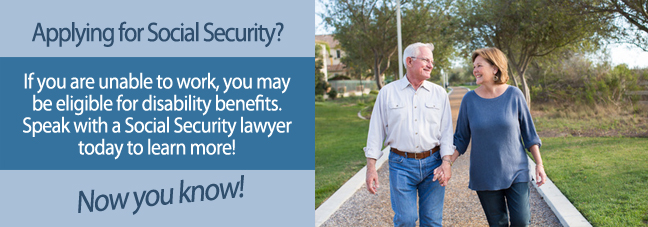If you suffer from osteoporosis and the medical condition has forced you to miss a substantial number of workdays, you can seek financial relief by filing a disability application with the Social Security Administration (SSA). The application process for disability benefits also includes four phases of the appeals process. which is reconsideration, an Administrative Law Judge (ALJ) hearing, a review by the Appeals Council, and a hearing in a federal district court.
Submitting the Initial Application
You should file a disability claim right after receiving a diagnosis for osteoporosis. The SSA looks unfavorably on applications that come in weeks or months after a diagnosis. You have to answer every question truthfully, as well as provide the SSA with accurate information regarding your health. The SSA throws incomplete disability applications out, which means you should work with a Social Security lawyer to ensure your application passes the litmus test imposed by the SSA.
Two Ways to Boost Your Claim
Simply submitting a disability application does not qualify you for financial assistance. You have to demonstrate that your symptoms are severe enough to exceed the standards published in the Blue Book. Published by the SSA, the Blue Book lists every medical condition that qualifies applicants for disability benefits. The SSA wants applicants to attach medical documentation to their disability applications to prove they exceed the symptoms standards listed in the Blue Book.
A Residual Functional Capacity (RFC) form can make the difference between having your claim approved or denied. The SSA wants to determine the maximum amount of work you can do while living with osteoporosis. You can expect to undergo a thorough medical examination that determines the seriousness of your symptoms.
Understanding the Appeals Process
With the SSA denying most disability applications, you need to know how to navigate the appeals process. The first step of the appeals process is called reconsideration. This stage of the appeals process sends your disability application back to the SSA for review. Although the same agency once again reviews your claim, a different examiner is responsible for issuing a decision.
Reconsideration appeals have about the same denial rate as the denial rate of initial disability applications. If you lose a reconsideration appeal, the next step is to take your claim in front of an ALJ. The ALJ overseeing your appeal will want to review the same physical evidence that the SSA reviewed during the initial application. However, an ALJ hearing gives you the chance to present more persuasive evidence to boost your claim. You also have the opportunity to make your case in front of the ALJ.
As a branch of the SSA, the Appeals Council operates strictly in writing, which means you cannot argue your claim in front of the council. Instead, you present everything in writing, from sworn testimonies to digital copies of payroll records. If you lose an Appeals Council review, the last step of the appeals process takes you in front of a Federal District Court judge. The legal processing unfolds in a similar way that the ALJ hearing unfolded. However, if you lose an appeal in a Federal District Court, then it is back to square one in the form of filing a new disability claim.

Request a Free Case Evaluation
Getting help from an experienced Social Security lawyer goes a long way towards helping you receive financial assistance because of osteoporosis. Request a free case evaluation to determine the best course of legal action.